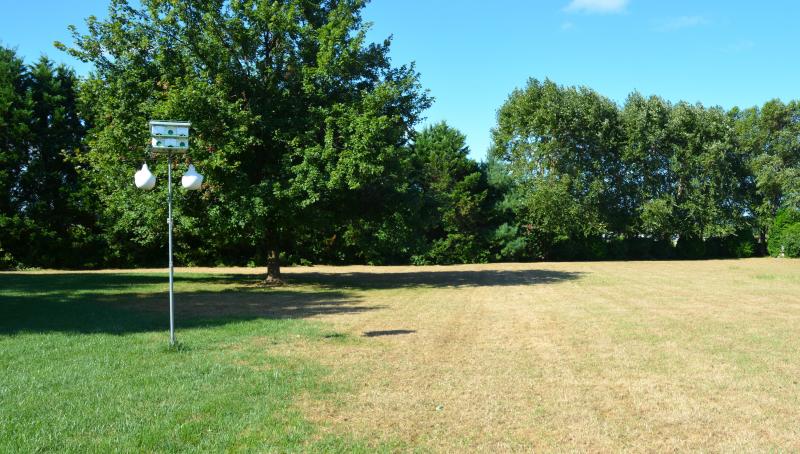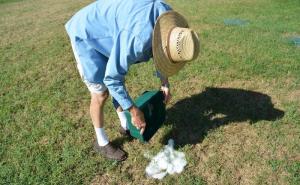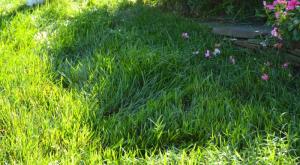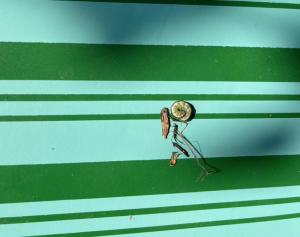‘Armyworm population has reached outbreak proportions’
Southern Delaware may not have been inundated with Brood X cicadas earlier this year, but it is being attacked by at least one other bug – armyworms.
According to a Facebook post Sept. 2 from the University of Delaware’s Cooperative Extension, this year’s armyworm population has reached outbreak proportions and is affecting turfgrass grown on lawns, park grounds, sod farms and sporting fields throughout much of the eastern United States.
“They are having an outbreak year that has populations higher than they have been in decades,” said the post.
According to the cooperative extension, armyworms typically feed on fescue, bluegrass, ryegrass, Bermuda grass, corn, sorghum and other grains.
“The caterpillars will feed during the day or night and radiate out from where the eggs were laid,” said the extension’s post. “When the populations are high, it may look as if an army has moved across the turf, consuming everything in its path.”
That’s what happened to Ronald Tipton’s lawn. In less than two weeks, the backyard of his 1-acre lot went from a lush carpet of Kentucky fescue grass that felt like walking on a sponge to an acre of grass that looks like it’s ready to be baled for hay. For some reason the armyworms didn’t like the weeds, said Tipton, pointing to a half-dozen tufts of green in the backyard.
Tipton said he noticed a few brown spots in the back area of his lawn, but he thought it was a fungus until the company he uses for lawn maintenance sent out an email about armyworms. Then the spots grew, and they grew quickly, he said.
“It happened so fast,” he said, during an interview Sept. 1, before the cooperative extension’s post.
Tipton said his 92-year-old partner spends most of his day on the enclosed porch of their home in the Covington Chase development off Oyster Rocks Road outside Milton. Looking at that lawn, and how well-maintained it was, provided his partner with a source of serenity and peace, said Tipton.
“That’s all gone now,” he said.
David Owens is an extension entomology specialist based at the Carvel Research and Education Center in Georgetown. There have been several reports of lawns affected in the Lewes area, as well as sod producers in Sussex and pasture grass for livestock in Kent County, he said in an email Sept. 7.
There are a couple of different species of armyworms, and the moths that lay their eggs typically arrive in the area around mid-July, although this year the flight was earlier than usual by almost two weeks, said Owens.
It takes close to 30 days for armyworms to complete development from egg to adult, said Owens, adding it’s possible that there may be another wave of them soon – he was recently sent a photo by a colleague of a Lewes residence with several egg masses around the home.
The extension’s post describes the caterpillars as roughly an inch long with greenish-gray, mottled-brown, brown to blackish coloration; they have a black stripe down each side and a light-colored upside-down “Y” on their head; they may also have four black dots on the dorsal side of their abdominal segments. The moth is described as having brownish forewings, with a whitish spot near the center, while hindwings are whitish, similar in color to cutworm moths. Females will lay their eggs on flat surfaces near lawns – sides of homes or structures, posts, signs – and may lay up to 1,000 eggs, said the post. There are several insecticides available for controlling the caterpillars, and there are also natural enemies – ground beetles, tiger beetles, ants and spiders – that often keep fall armyworm populations in check in turfgrass settings, said the extension’s post.
Owens said there are many factors that influence insect populations and if they align just right, an outbreak can result. He listed a few of those factors – moth activity started earlier than usual; unusually poor efficacy from certain insecticides; suggestions that wet weather is beneficial for increasing grass growth; other suggestions that dry weather in a particular region has prevented disease outbreaks.
Many entomologists in southern states say this is the worst outbreak they have seen in their careers, said Owens.
“The good news is they do not survive freezing weather,” said Owens. “They are a tropical species. Winter pushes them back down to mid or southern Florida and southern Texas, and it is very possible that we will not have such widespread damage next year.”
The key, said Owens, is to scout lawns regularly, particularly those with Bermuda grass. If someone thinks they have armyworms, they can take a jug of soapy water and soak an area of grass, which will drive the caterpillars up so they can be more easily seen, he said.
Chris Flood has been working for the Cape Gazette since early 2014. He currently covers Rehoboth Beach and Henlopen Acres, but has also covered Dewey Beach and the state government. He covers environmental stories, business stories and random stories on subjects he finds interesting, and he also writes a column called Choppin’ Wood that runs every other week. He’s a graduate of the University of Maine and the Landing School of Boat Building & Design.





























































